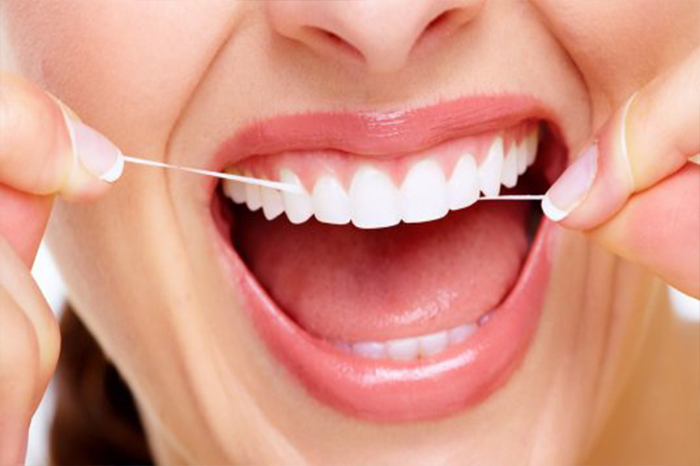It seems that the teeth are located close to each other, but in fact, the gaps between them are sometimes even relatively large in the lower part of the gums. Dirt often settles in these interdental spaces, to which the toothbrush has no chance of getting – even modern sonic toothbrushes do not clean it perfectly.
Dental floss and interdental brushes are proven solutions. An interdental brush of a suitable size passes into the interdental spaces, fills them, and cleans the entire space beautifully, including the gingival groove. Dental floss or tape is used to clean very narrow areas that are inaccessible even to an interdental brush
An oral shower (professionally “irrigator”) cleans the interdental spaces and massages the gums. It creates a thin pulsating jet of high-pressure water that removes dirt without damaging teeth and gums. Cleans large gaps between teeth and fine cracks. Mouth showers are also particularly suitable for people with fixed braces, which make cleaning much more difficult. Cleaning is only half of what a shower can do for the oral cavity. It is also used to massage the gums (with this use, the water jet should have less pressure). Gum massage improves their condition – fills them with blood and strengthens them.
Types of mouth showers and basic parameters
There are four main types of dental showers. Some models can be connected directly to the mixer. The smaller bathrooms (or traveling ones, as the name suggests) have a portable shower for the oral cavity. It is powered by mains or (more often) powered by a battery and draws water from a smaller tank in the handle.
If you have enough space, you should probably consider a desktop oral shower. These outlets powered by irrigators tend to have a much larger water tank, built-in nozzle stands, etc., but most importantly, there are usually more adjustment options (e.g. pressure) and more functions. The fourth option is the so-called oral center, which combines a dental shower and an electric toothbrush.
Oral shower table
When listing the types, we actually discussed the main parameters that should be taken into account when choosing. First of all, the type of shower, then the pressure + or the possibility of its adjustment (for example, in showers offering both gum massage and cleaning of interdental spaces), the volume of the tank, and the method of watering.
In particular, choose also according to the contents of the package (for example, whether it contains more nozzles, ideally of different colors, so that each member of the family has its own) or according to non-standard functions (for example, whether there are different nozzles with different purposes – massage, cleaning, suspenders …). It is also worth noting that there are special oral shower options for children.
As for brands, we can offer models from well-known manufacturers Philips Sonicare or Oral-B, but Sencor, Truelife or Biotter dental showers are also popular.
How to take a shower for the oral cavity?
First of all, we recommend consulting a dentist or a hygienist – they know your teeth and the condition of your oral cavity best of all. Undoubtedly, they will be happy to advise you and, perhaps, recommend specific types of oral showers that are most suitable for you.
People’s needs for gum care are particularly specific. On the contrary, in the case of interdental spaces, we can clearly say that you should clean them regularly, ideally daily. The main task, in this case, is to remove dirt, but not to damage the gums, which is the task in which a dental shower is best. You can alternate the shower using interdental brushes and threads, just as an electric brush can be alternated with a manual one.

Leave a Reply